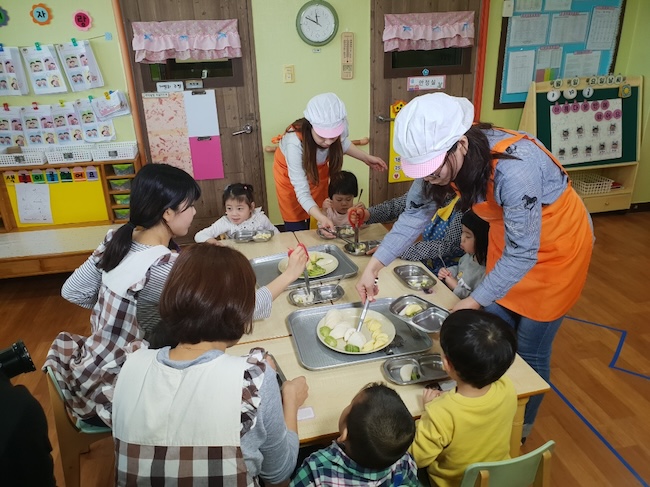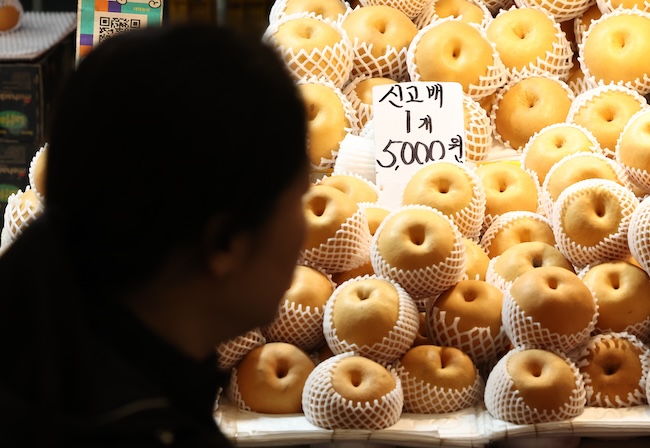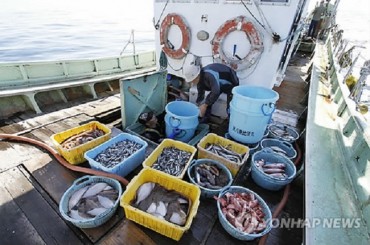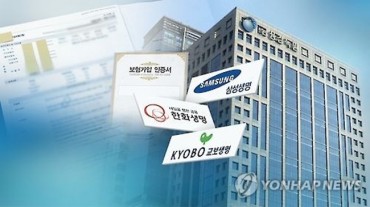
The Gyeonggi Fruit Agricultural Cooperative, tasked with running a fruit supply program for children in the province, is facing hurdles due to the soaring prices of fruits. (Image courtesy of Gyeonggi Province)
SEOUL, Mar. 11 (Korea Bizwire) – The Gyeonggi Fruit Agricultural Cooperative, tasked with running a fruit supply program for children in the province, is facing hurdles due to the soaring prices of fruits.
This initiative, aimed at improving children’s health and dietary habits, provides a variety of fruit snacks to kindergartens, community child centers, comprehensive care centers, and home-cared children in the region, with plans to serve fruit 58 times per year (four or five times a month).
Since its inception in 2019, the project has been a joint effort between the province and municipal governments, each covering half of the project costs.
Regardless of the fluctuating market supply and prices, the allocated amount of fruit per child is set at 100g for kindergartens, 150g for centers with older children, and 200g for communal living homes and shelters for abused children.
To supply at least 100g of fruit to all 465,000 beneficiaries, around 46 tons of fruit are needed per distribution. However, after accounting for the weight of peel and cores, and meeting the minimum packaging requirement of 1.8kg, the actual supply amount exceeds 60 tons.
The cooperative has been struggling to secure fresh, seasonal fruits due to the months-long surge in fruit prices.

Other fruits, like citrus, pears, and strawberries, have also seen significant price increases due to their substitution relationship with apples. (Image courtesy of Yonhap)
The monthly fruit supply plan for this year included citrus, pears, persimmons and tomatoes in January, and Hallabong (a type of mandarin), pears, and strawberries in February and March. Apples, a staple fruit, were only supplied once in the southern region in February.
Alternative fruits are also in high demand, making it difficult to find replacements. According to Statistics Korea’s February Consumer Price Trends, apple prices surged by 71% in February after a 56.8% increase in January, due to adverse weather conditions, heavy summer rains, and disease affecting last year’s harvest, which decreased by 30%.
Other fruits, like citrus, pears, and strawberries, have also seen significant price increases due to their substitution relationship with apples.
The cooperative is exerting considerable effort to secure the necessary volumes of fruit, relying on assistance from agricultural cooperatives nationwide, as only 60% of the supply can be sourced locally due to cultivation limitations.
Lee Yong-ha, the representative of the cooperative, expressed concern over the unseasonably high fruit prices and scarcity. “Usually, fruit prices drop after the peak holiday season, but that’s not the case this year,” he said. “Despite the challenges, we must focus more on the quantity and quality of the fruits, as it’s for the children’s health.”
He remains hopeful for May, when melons, tomatoes, and watermelons begin to be harvested in earnest, and is making every effort to secure stored fruits until then.
However, the weather remains a variable, with hopes that there will be no low-temperature damage during the flowering period from late March to early April.
Ashley Song (ashley@koreabizwire.com)




![[In-depth] Foreign Investment Firms Put out Rosy Predictions for 2015 Korea Economy [In-depth] Foreign Investment Firms Put out Rosy Predictions for 2015 Korea Economy](http://koreabizwire.com/wp/wp-content/uploads/2014/12/34402175_m-370x237.jpg)

